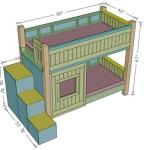How to Make Raised Beds on Slopes: Essential Aspects
Elevated garden beds provide gardeners with raised planting surfaces. This type of gardening has numerous advantages, including enhanced drainage, better soil conditions, and ease of access. Building raised beds on slopes necessitates additional considerations to ensure stability and prevent erosion. This article delves into the critical aspects of creating raised beds on slopes, providing a comprehensive guide for successful implementation.
Proper Planning and Design:Meticulous planning is essential for successful raised beds on slopes. Determine the dimensions, shape, and location of the beds, considering the slope's angle and sun exposure. Choose durable materials that can withstand the elements, such as treated lumber or stone.
Slope Stabilization: Stabilizing the slope is crucial to prevent beds from shifting or collapsing. Use retaining walls, terracing, or geotextiles to reinforce the slope and prevent soil erosion. Retaining walls can be built from various materials, including concrete, wood, or stone.
Drainage Solutions: Elevated beds on slopes require proper drainage to prevent waterlogging. Incorporate drainage holes or gaps in the bed's sides or bottom to allow excess water to escape. Amend the soil with organic matter to improve drainage and aeration.
Bed Support and Reinforcement: Ensure the beds are adequately supported and reinforced to withstand the weight of the soil and plants. Use sturdy materials and consider additional support such as stakes or braces. Secure the beds to the slope to prevent movement.
Soil Composition: The soil in raised beds on slopes should be well-draining and nutrient-rich. Amend the soil with organic matter, such as compost or manure, to enhance fertility and water retention. Consider using a soil mix specifically designed for raised bed gardening.
Plant Selection: Choose plants that thrive on slopes and can tolerate varying moisture levels. Consider deep-rooted plants and those that help stabilize the soil. Avoid plants that require excessive watering or are susceptible to erosion.
Maintenance and Care: Regular maintenance is essential to ensure the longevity and productivity of raised beds on slopes. Water regularly, especially during dry periods. Remove weeds promptly to prevent competition and erosion. Replenish the soil with organic matter as needed to maintain fertility.
By carefully considering these aspects and implementing the recommended strategies, gardeners can create successful and sustainable raised beds on slopes. These beds can provide numerous benefits and enhance the beauty and productivity of sloped landscapes.

How To Build An Organic Raised Bed On A Sloped Yard Deeply Southern Home

How To Build An Organic Raised Bed On A Sloped Yard Deeply Southern Home

Can You Grow A Raised Bed Garden On Slope Gardening Channel

How To Build An Organic Raised Bed On A Sloped Yard Deeply Southern Home

How To Build Raised Garden Beds On A Slope

How To Build Raised Garden Beds On A Slope

How To Build Raised Garden Beds On A Slope

How To Build An Organic Raised Bed On A Sloped Yard Deeply Southern Home

How To Build Raised Garden Beds On A Slope Or Hillside

How To Build An Organic Raised Bed On A Sloped Yard Deeply Southern Home







